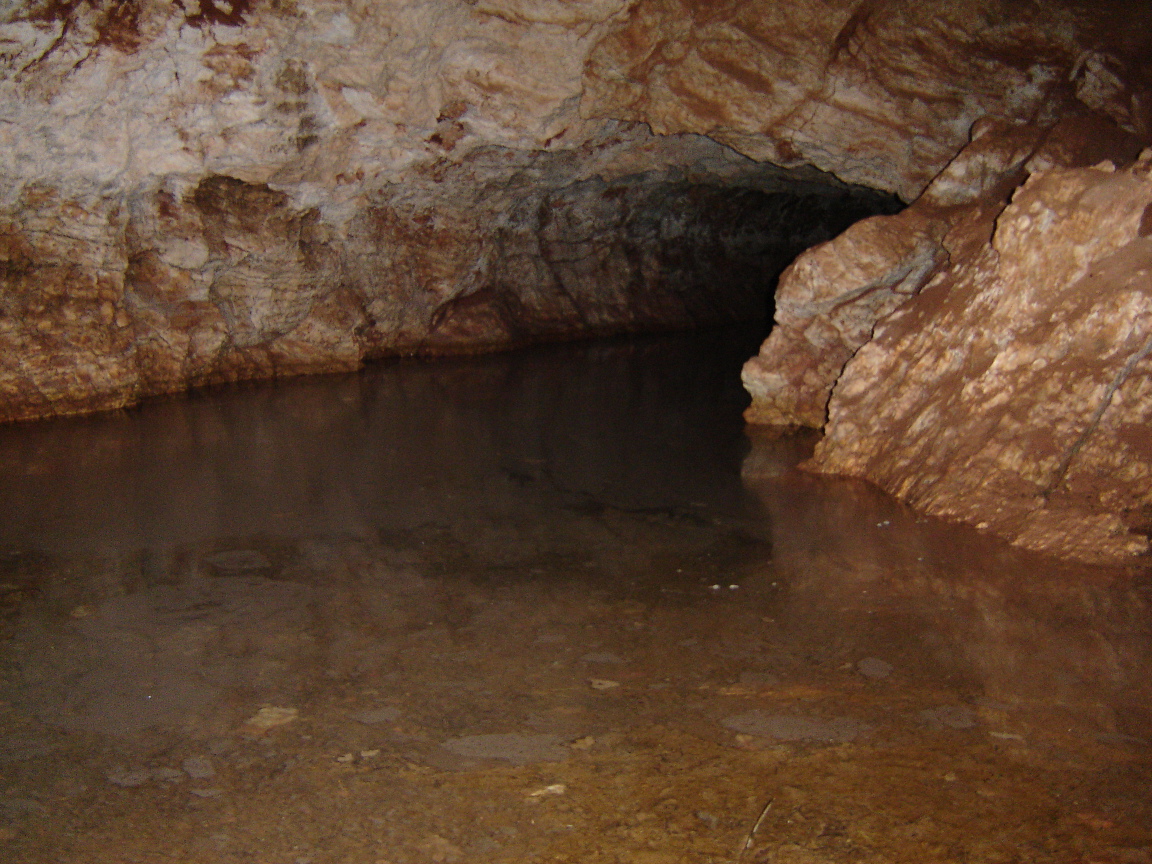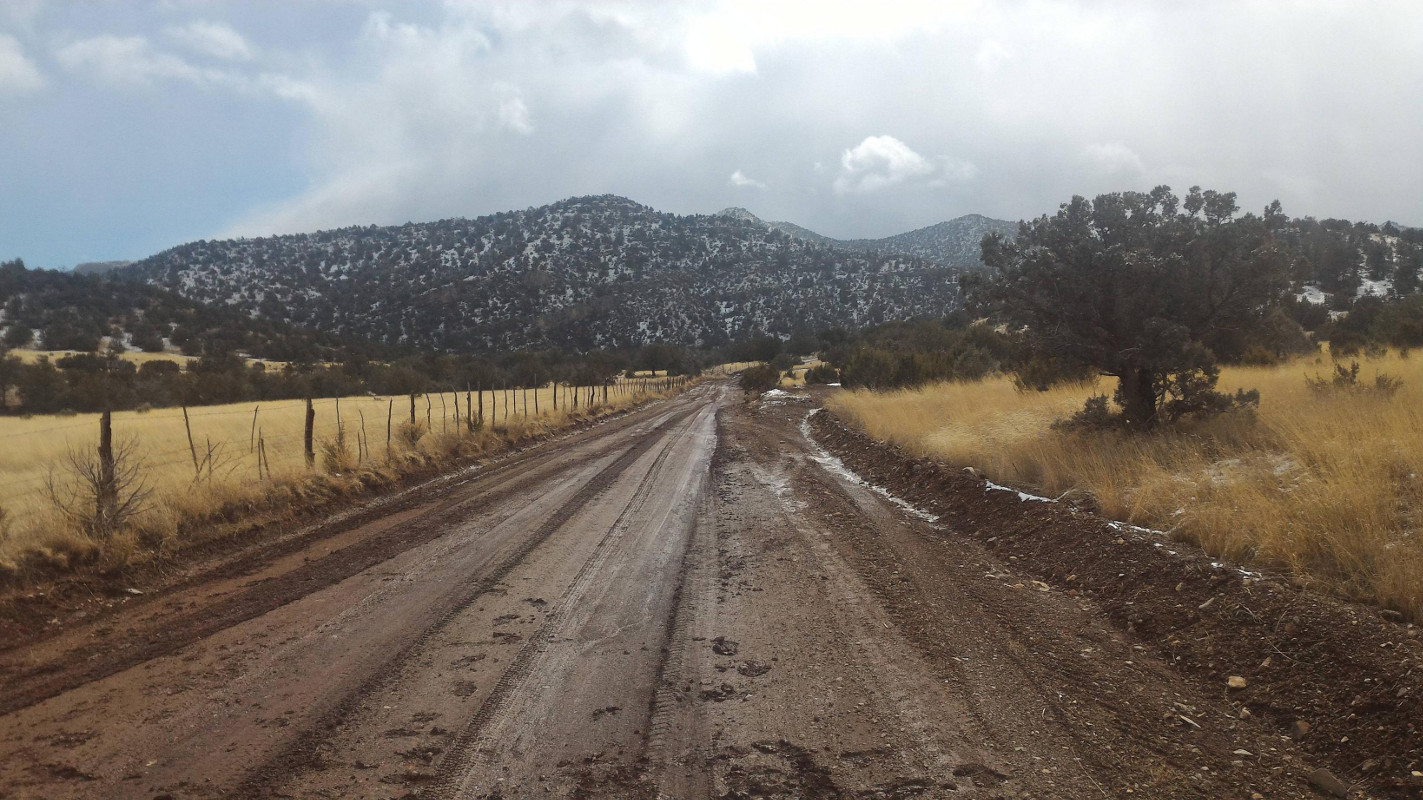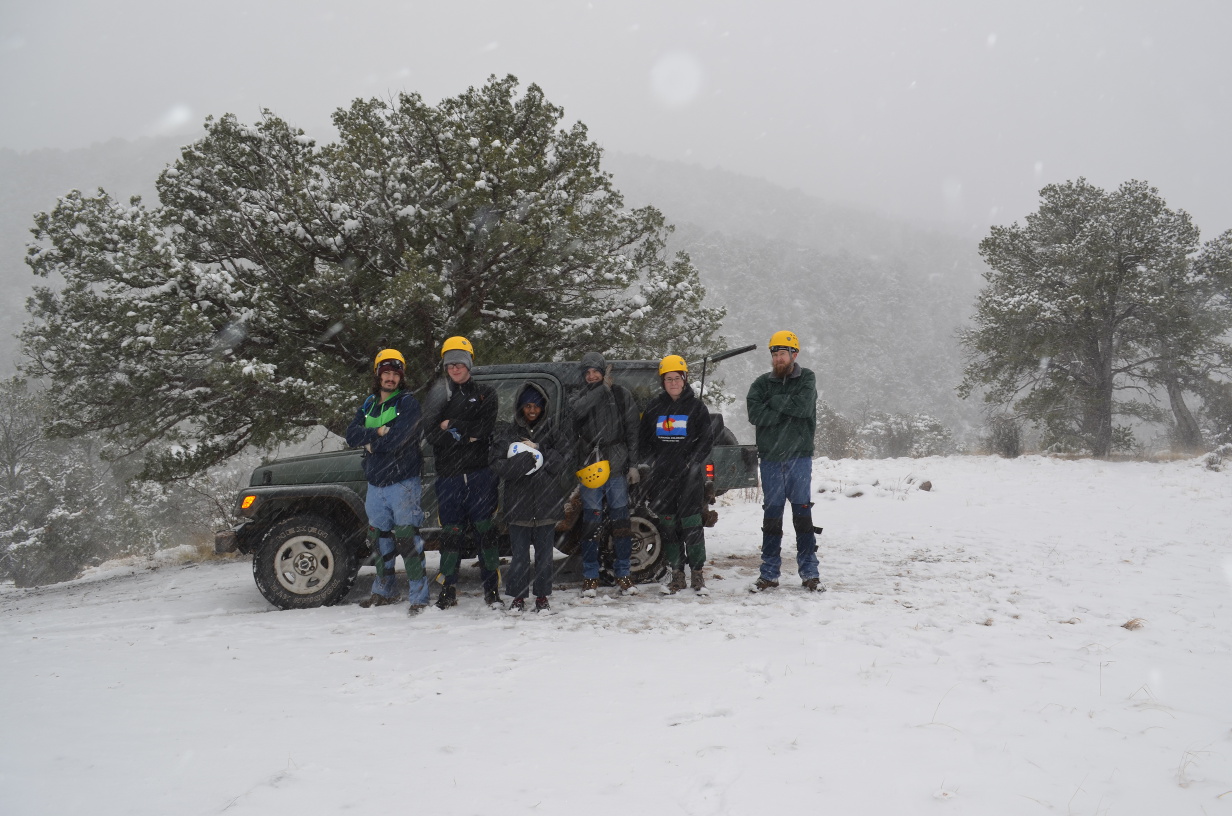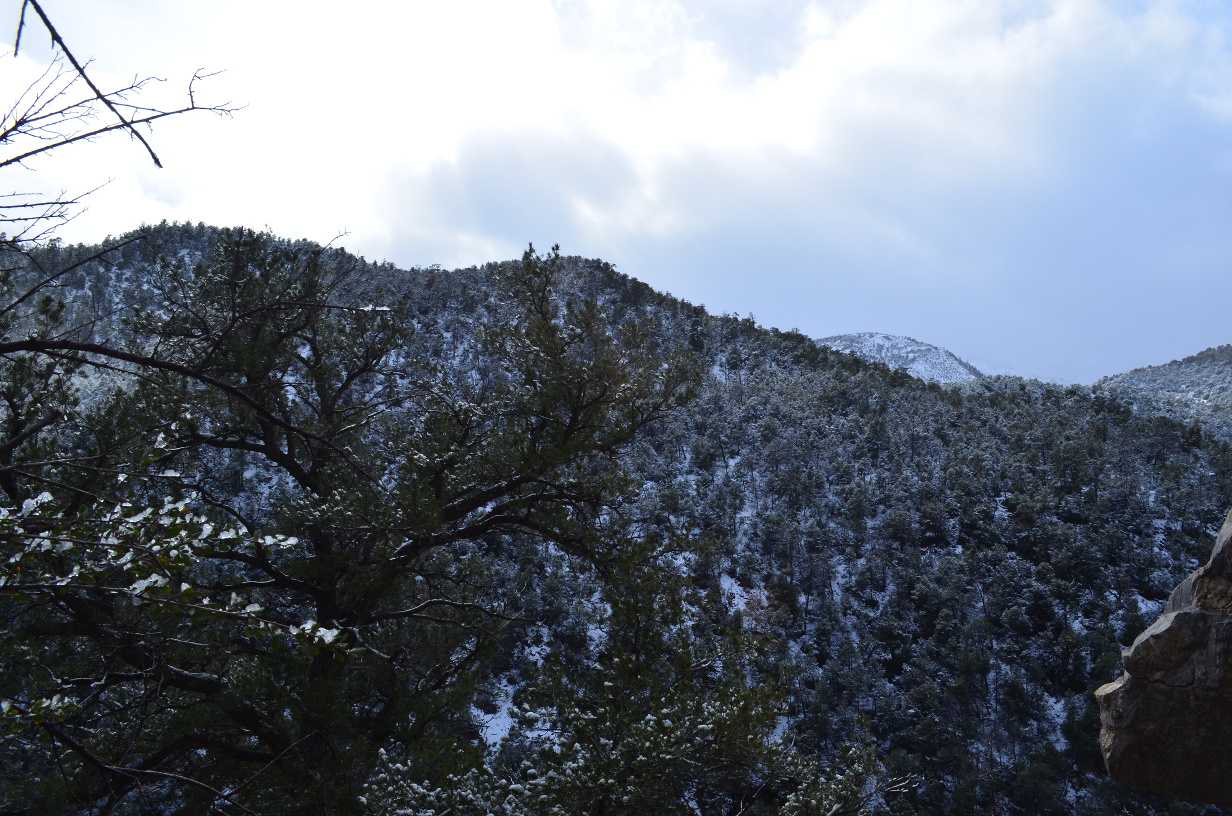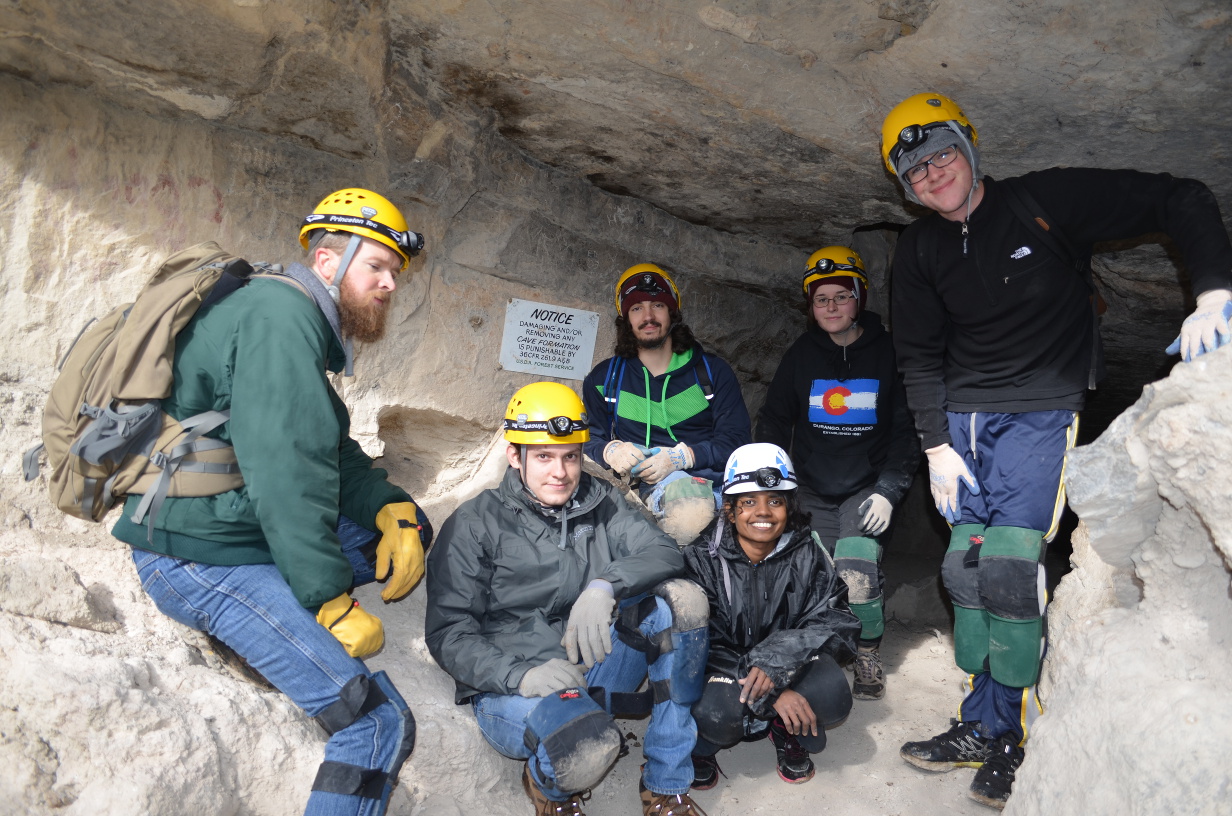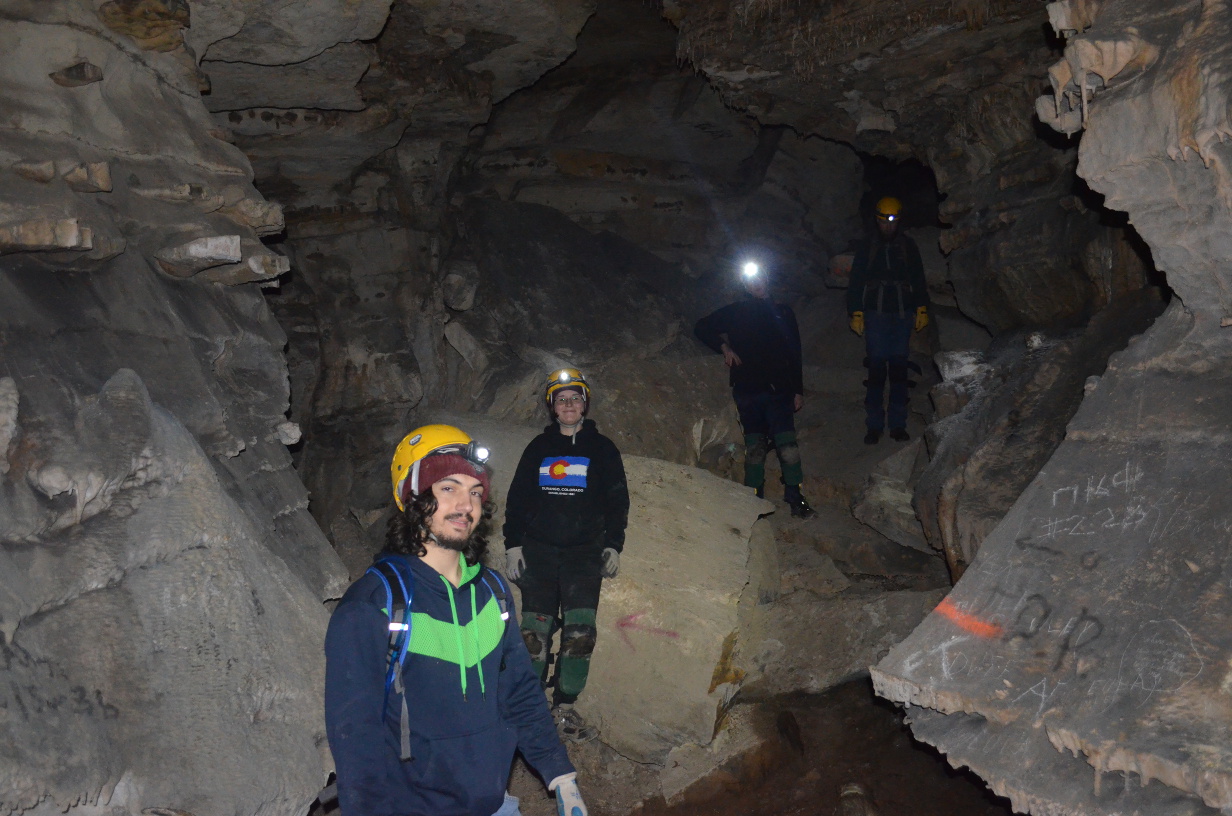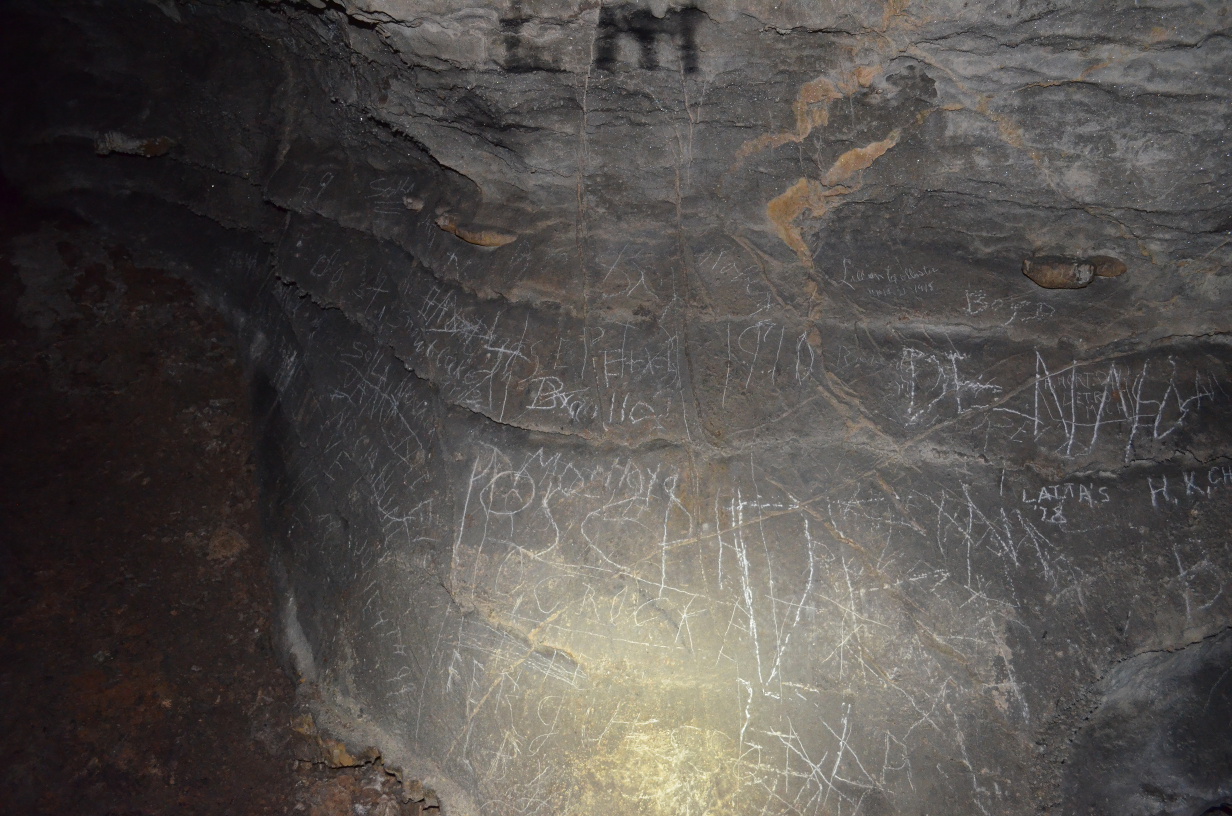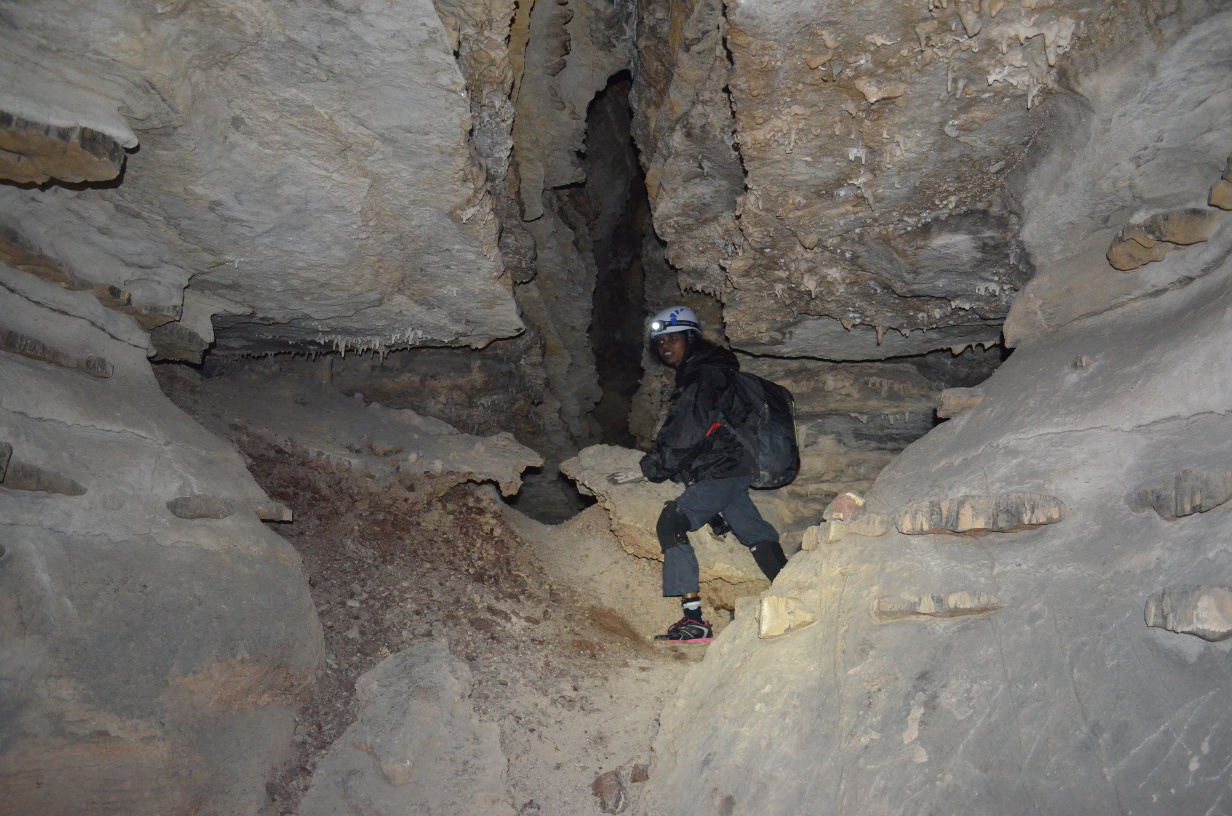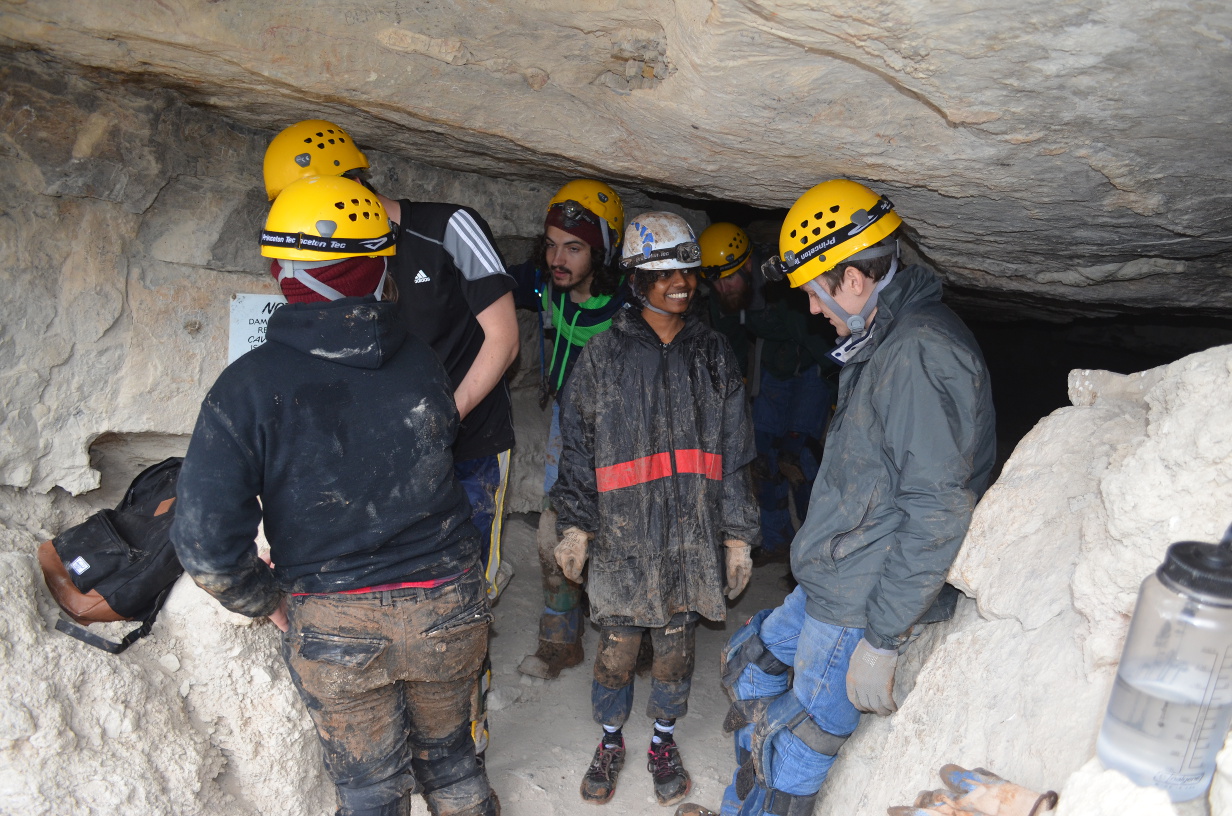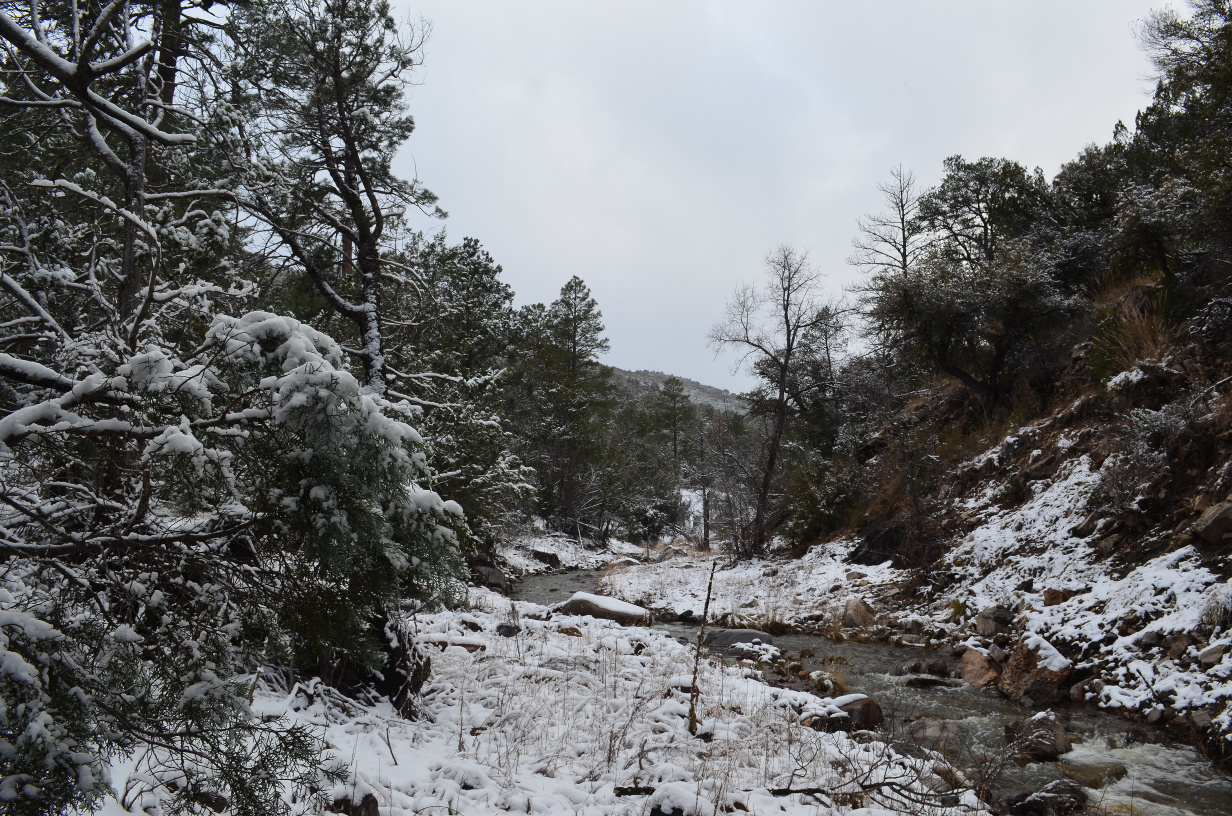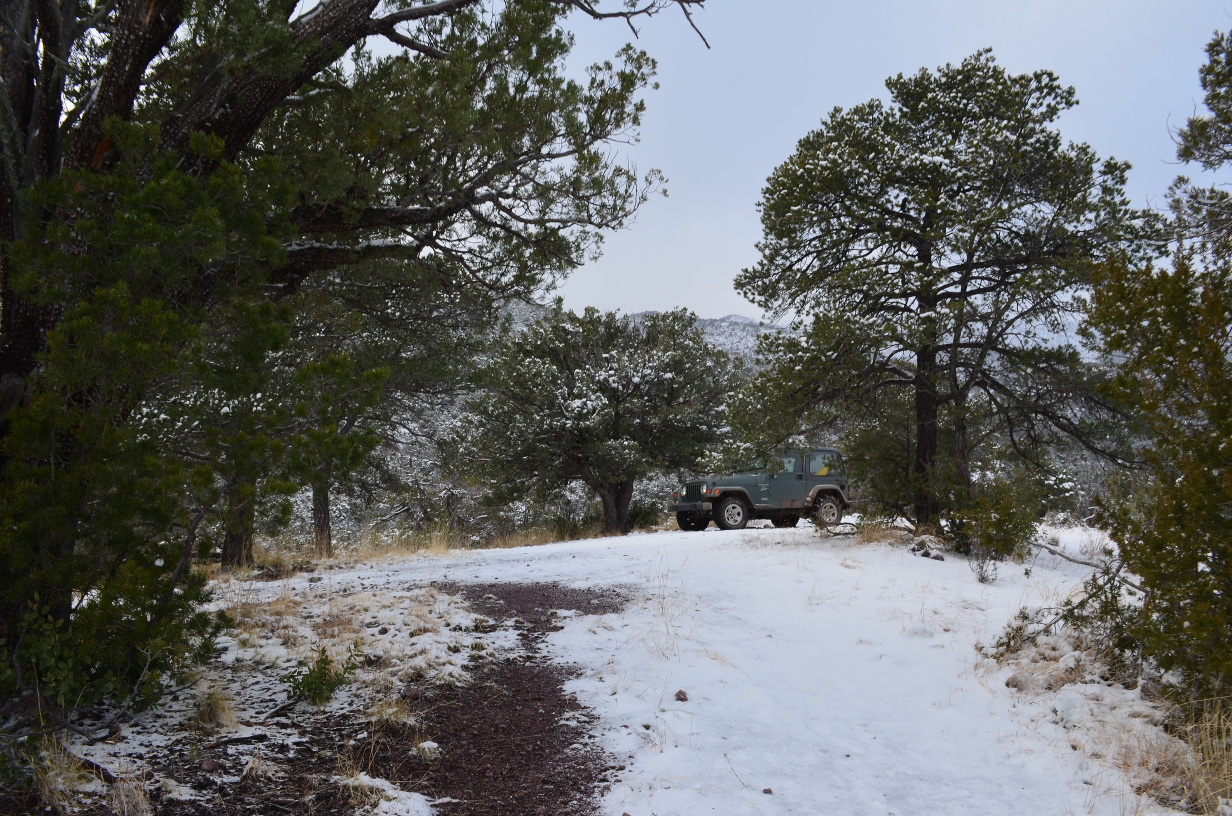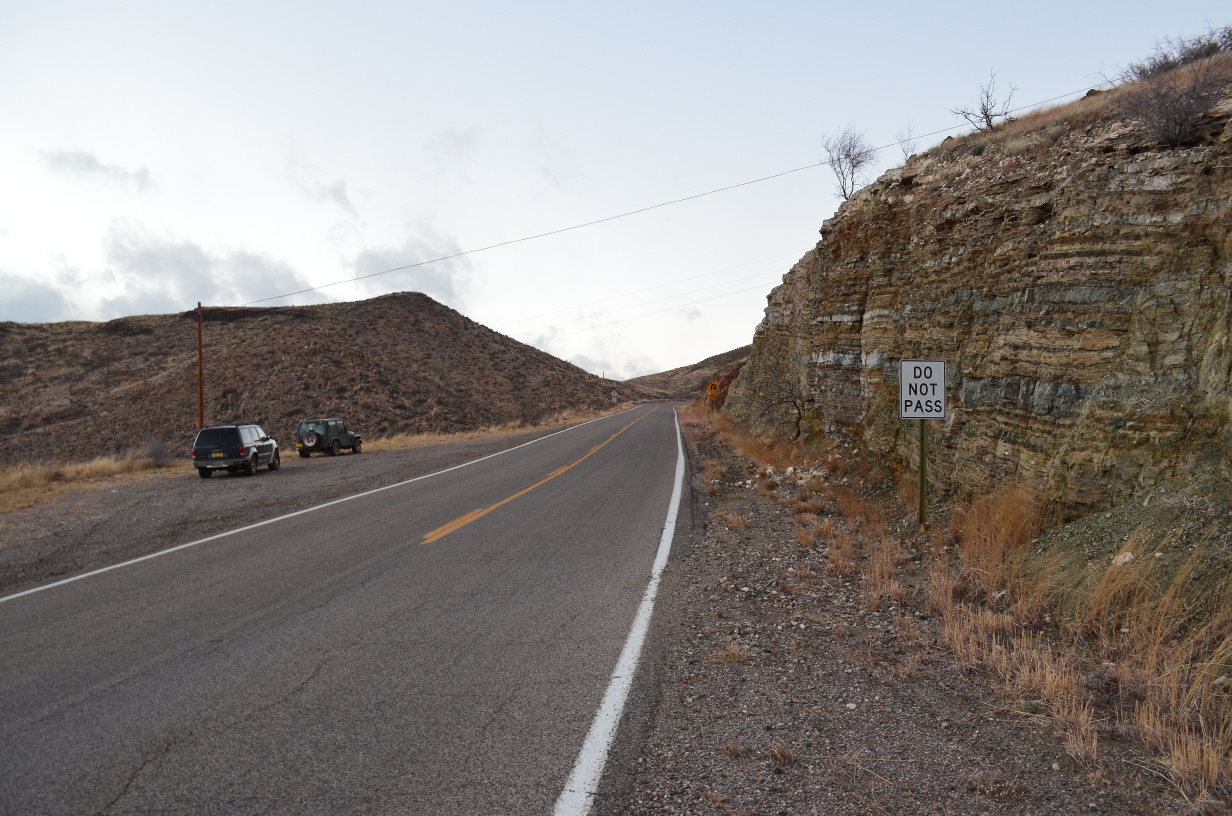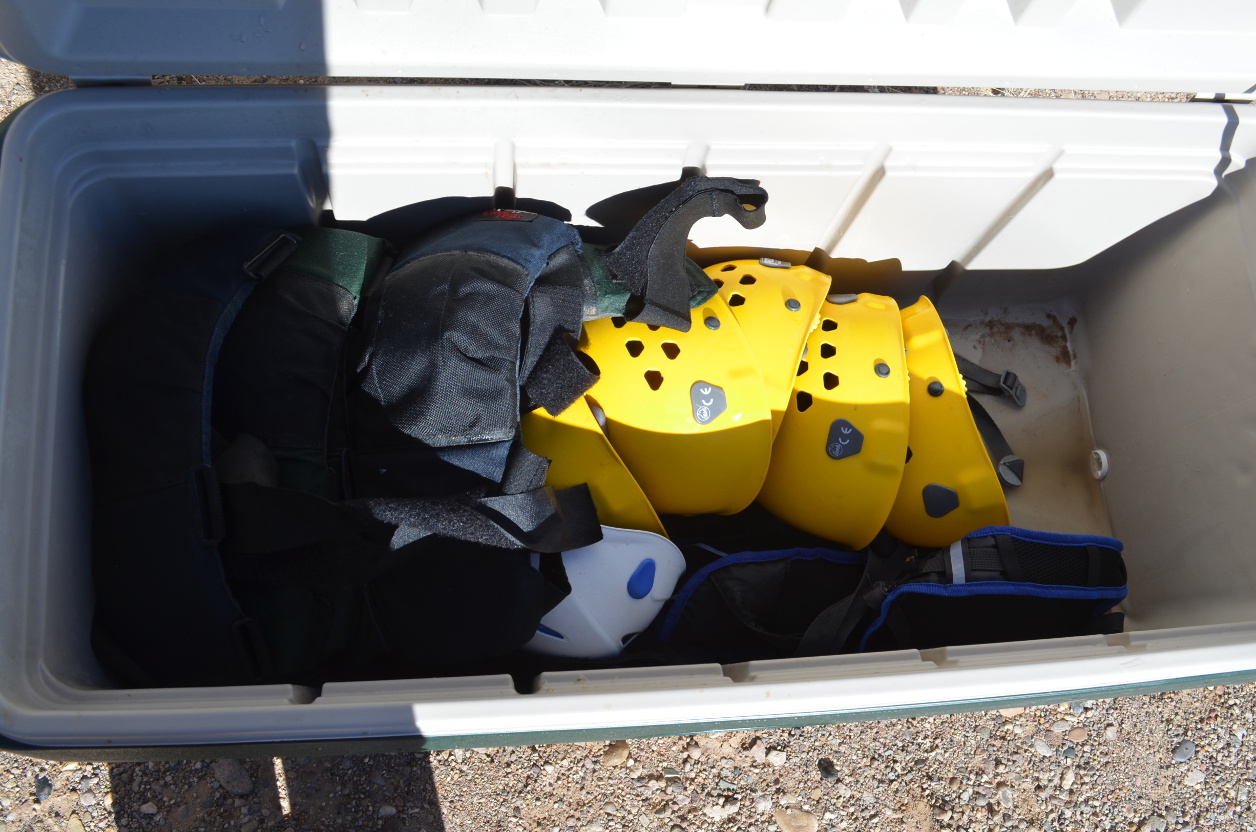Trip Report: Robinson's Cave
NMT Caving Club, January 21 2017
This trip report covers a NMT Caving Club (AKA New Mexico Tech Student Grotto) to Robinson's Cave. We met on campus at 8:30AM in the morning, went caving, and returned late in the evening.
Trip leader: David Hunter
Attending: Noah, Connor, Alyssa, Dustin, Eshani, and John
Robinson's Cave is located in the Black Range to the west of T or C. Prior discussion with the Forest Service verified that the cave is no longer closed due to WNS, though normal decontamination procedures should be followed.
The original plan was to visit Alabaster cave. But the weather forecast did not look good and Alabaster is prone to flooding. This photo is the exit of Alabaster when it isn't flooding! Not wanting to wind up in The Journal of North American Caving Accidents, I took the group to Robinson's cave instead. Upon arrival we found the dirt road to the cave was wet and muddy, but looked manageable.
We started in and the 2nd vehicle, a Ford explorer, promptly slide off the road into the ditch. It was 2WD with road tires so this isn't that surprising. The road was slicker than it looked. Driving on these roads takes experience, and in getting experience you sometimes slide into the ditch. I put a set of tire chains on the jeep an used the the tow chain to pull the explorer out. Unfortunately, the tires on the explorer were a different size so I couldn't loan them my 2nd set of tire chains.
Having learned something about driving on slick roads, the driver of the explorer thought he could make it further if we went slowly. We proceeded carefully for several miles. Once we got to the first major hill there was 2 inches of snow on the ground and the explorer had to stop. While it may have been possible to take it further, the road ahead becomes exposed. Risking a low speed slide into a ditch is one thing, but I will not risk a low speed slide off a steep hillside.
The group was eager to keep going. As the jeep (with tire chains and 4WD) didn't have any trouble, I suggested making two trips over the last few miles. 3 cavers could start hiking down the road while I dropped off the other 3 at the trail head. Then I could come back and pick up 3 hikers. This worked well, getting everybody to parking area.
Through the entire trip I kept an eye on the condition and made sure that everybody was warm enough. I also kept an eye on the weather in case it decided to exceed the forecast of a few inches of snow. Increasing the safety was the presence of the vehicles (with plenty of fuel and functioning heaters). And I had a stash of emergency gear in my jeep: some extra warm cloths, a camp stove (that can burn gas and diesel), the aforementioned tire and tow chains, water, and some tools. Also, the cave provides plenty of warmth - and even a warm place to spend the night in case of a real emergency.
In the end the snowy trip was perfect. It pushed the limits of the beginners while staying safe. In addition to basic caving, they learned a lot about driving on snowy and muddy roads, pulling stuck vehicles out of ditches, the use and value of tire chains, and preparation for snowy trips. (But Ford earned a demerit for how hard it was to safely hook the tow chain to the front of the explorer)
Once everybody was at the parking area we geared up and prepared for a hike through the snow. As usual, we had to hike around the private property, giving them a wide berth so that we don't disturb them.
Everybody did well on the hike to the cave, though some were starting to get cold. The snow covered landscape was a nice change from the usual hot and dry hike that is common at Robinson's
Most of the cavers were pleasantly surprised to find out how warm it was inside the cave. It is a remarkable change after hiking through the snow.
The new cavers were surprised at how large some of the rooms are; experienced cavers are bummed about how small the largest rooms are.
As usual the graffiti is a reminder of the importance of cave conservation and preservation. Robinson's could be a target for restoration efforts, though the limited available effort might be better spent restoring gated caves. We picked up some trash this trip, including a remarkable number of dead glow sticks that some pest had scattered throughout the cave.
As usual I let the group wonder around through the cave enjoying themselves; I just make sure they don't damage anything or do anything unsafe. Eshani was especially enthusiastic as she has a huge natural advantage when caving.
After exploring for awhile we took a break in a large room. Once everybody was ready to leave most of them realized that they did not know the way out. The ease of getting lost is a very important lesson for new cavers and nothing teaches it like actually getting lost. But this must be done in a controlled environment. Robinson's is small enough that even a lost caver can find the way out with a bit of systematic exploration. In this case I simply pointed out that this was where we came in, and we were a few minutes from the surface.
Everybody had a great trip and was happy to reach the surface and head back.
After exiting the cave we had a snowy hike back. The creak was beautiful but, unlike summer trips, not something you would want to swim in. Eshani was especially happy as there is no snow in her home country of Sri Lanka.
Upon returning to the car we used the same strategy we used going in. I took 3 others in the jeep and drove them back to the explorer while the other 3 started hiking. Once I dropped the first 3 at the explorer they slowly started out. I went back and picked up the 3 hikers, and we all rendezvoused at the highway. As before, with the tire chains and 4WD the jeep had no trouble at all.
On the drive home we stopped at a rock outcropping for a geo hobbyist to look for rocks. Because rocks are cool.
Everybody voted to stop for supper in T or C so we went to a good Mexican place there. It was a generally enjoyable meal, and a good chance for everybody to chat.
We returned to Socorro late in the evening we had to do the WNS decon the next day. We met up, cleaned the gear, and used the clubs WNS decon unit.
I plan to get an immersion heater, but for now I use hot water from my hot water heater. Combined with a giant pot of boiling water this gets it to the desired 140 F, but figuring out how much boiling water we need took some experimentation. This time I overdid the hot water a little - something to avoid as it is bad for the gear. Of course, the agencies requiring WNS decon don't seem to care about the cost (in time and money) or any negative side effects. Those are blamed on the cavers, and if you complain too much you are threatened with expulsion from the caves.
Last Updated: June 2017; Original Posting.
Alabaster photo credit and © Karl Haase, 2005
Road photo credit and © Conner Whitman, 2017
Text and all other photos, © David C. Hunter, 2017
nmtcaver {at) dragonsdawn (dot] org


